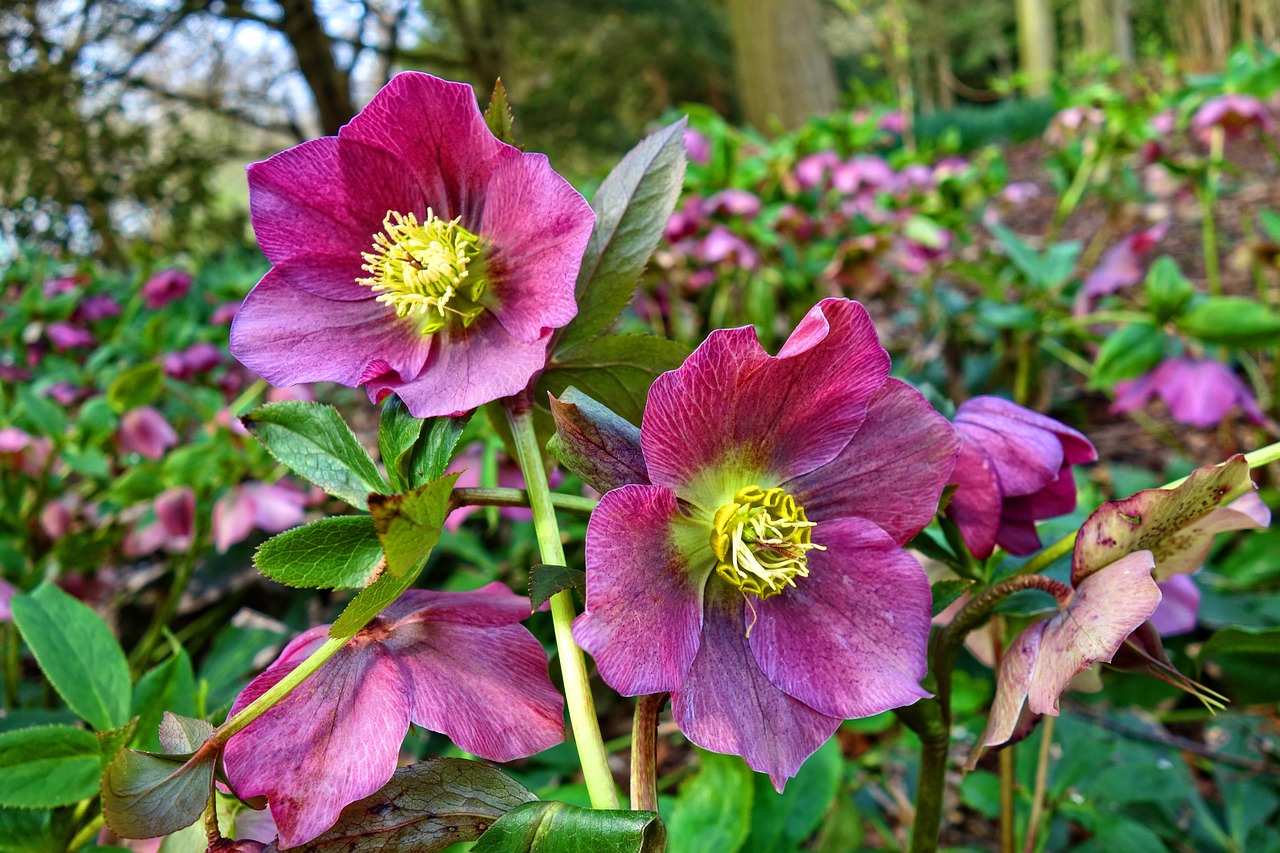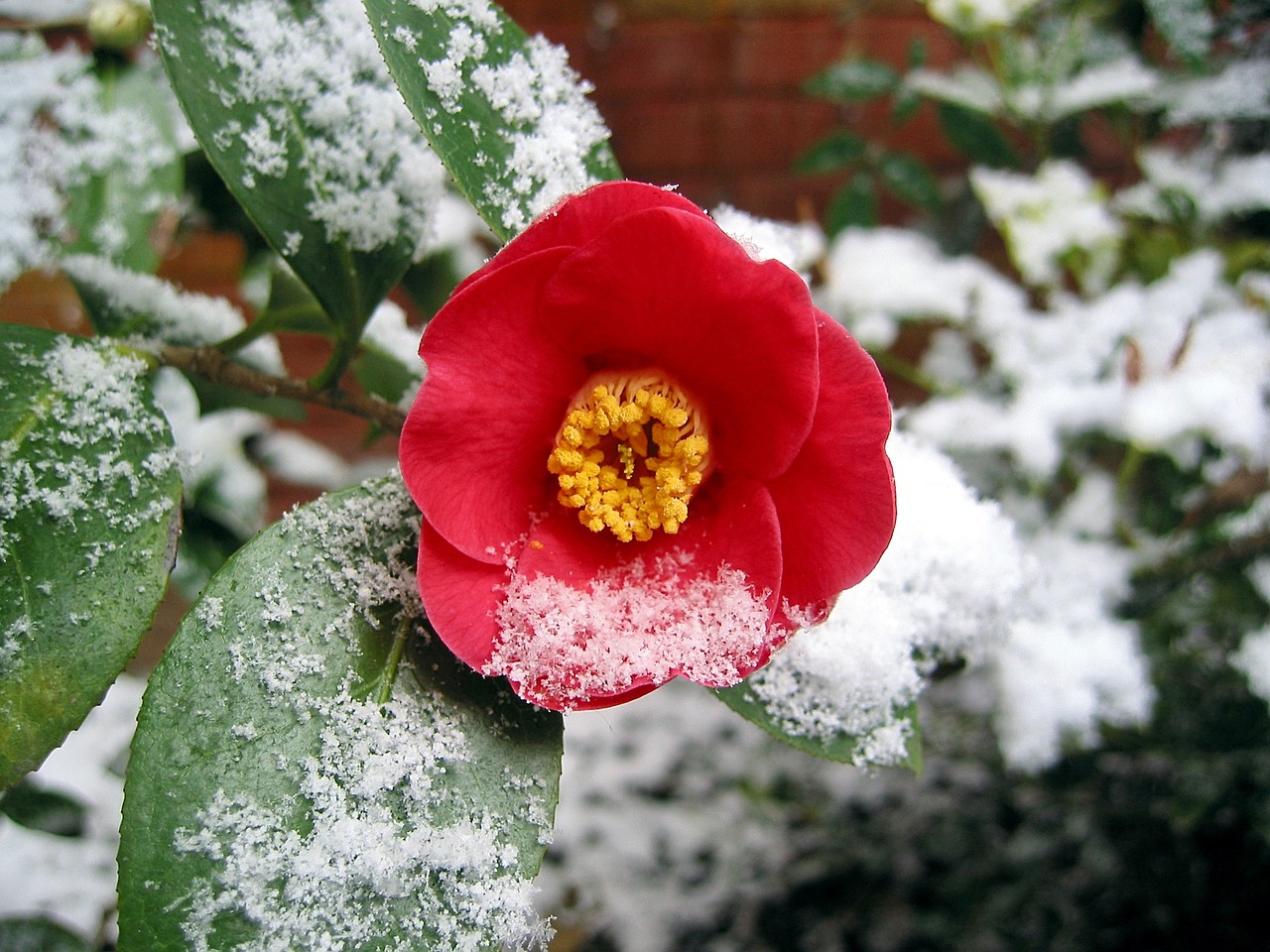
When the world outside is blanketed in frost and the days are short, many might believe that nature is at rest. However, winter brings its own unique charm, especially through the enchanting array of flowers that defy the season’s chill. These resilient blooms add a splash of color and a touch of life to the otherwise dormant landscape. From vibrant hellebores to delicate snowdrops, winter’s floral offerings prove that even in the coldest months, beauty can thrive. Let’s delve into the captivating world of flowers that bloom in winter and discover how they not only survive but also flourish amidst the snow.
The Resilience of Winter Blooms
Winter is often seen as a time of dormancy, but for certain flowers, it’s the perfect opportunity to shine. These hardy plants have adapted to the harsh conditions of winter, making them unique and fascinating. Their ability to bloom in frigid temperatures and low light conditions speaks volumes about their resilience and adaptability.
How Do Winter-Blooming Flowers Survive?
Understanding how these flowers manage to bloom in winter requires a closer look at their adaptations:
- Cold Tolerance: Winter-blooming flowers have developed the ability to withstand freezing temperatures. This can be due to special chemical compounds that prevent ice formation in their tissues or by having particularly hardy structural features.
- Low Light Adaptation: Reduced sunlight in winter doesn’t hinder these flowers; instead, they often have adapted to lower light conditions, sometimes by having highly reflective surfaces or efficient light absorption capabilities.
- Energy Efficiency: Many winter-bloomers have evolved to conserve energy and resources, ensuring that they can survive with minimal nutrients and in challenging conditions.
Featured Winter Blooms
Winter’s floral offerings are diverse, each bringing its own distinct beauty to the cold season. Here are some of the standout winter flowers that grace gardens and landscapes during the colder months.
1. Hellebores: The Christmas Rose

A Winter Wonderland in Bloom
Often referred to as the Christmas Rose, Hellebores are the epitome of winter elegance. These resilient flowers are not true roses but are named for their festive blooming season and rose-like appearance.
- Appearance: Hellebores boast large, cup-shaped flowers that come in various colors, including white, pink, purple, and green.
- Blooming Season: From late December through early spring.
- Growing Conditions: They thrive in shaded or partially shaded areas with well-draining soil.
Why They Shine
Hellebores are beloved for their ability to bloom in the coldest months, bringing color and life to winter gardens. Their leathery leaves and nodding blooms make them a striking contrast against the winter’s white backdrop.
2. Witch Hazel: The Enigmatic Winter Bloomer

The Magic of Witch Hazel
Witch Hazel is a unique winter-blooming shrub that enchants with its spidery, fragrant flowers. Its name might conjure images of mystical lore, but this plant’s beauty is entirely real.
- Appearance: Witch Hazel produces clusters of ribbon-like petals in shades of yellow, orange, or red.
- Blooming Season: From January to March.
- Growing Conditions: Prefers full sun to partial shade and well-drained soil.
The Allure of Witch Hazel
The delicate fragrance of Witch Hazel flowers is a delightful treat during the winter. Additionally, its bark is often used in skincare products for its astringent properties, adding another layer of interest to this versatile plant.
3. Snowdrop: Nature’s First Herald

The Delicate Snowdrop
Snowdrops are among the first flowers to emerge after winter’s grip, often poking through the snow to signal the promise of spring.
- Appearance: Snowdrops feature small, teardrop-shaped white flowers with green accents.
- Blooming Season: Late January to March.
- Growing Conditions: They thrive in well-drained, slightly acidic soil and full to partial shade.
A Symbol of Hope
Snowdrops symbolize new beginnings and hope, making them a perfect addition to winter gardens. Their quiet, unassuming beauty is a gentle reminder of the changing seasons.
4. Winter Jasmine: Brightening the Dreariest Days

A Splash of Yellow
Winter Jasmine is renowned for its vibrant yellow flowers that brighten up the bleakest winter days.
- Appearance: This shrub features bright yellow, tubular flowers that contrast beautifully with its bare stems.
- Blooming Season: December through February.
- Growing Conditions: Prefers full sun and well-drained soil.
A Cheerful Presence
Winter Jasmine’s cheerful color and spreading habit make it an excellent choice for adding warmth to winter landscapes. It often forms a cascading effect when grown on walls or trellises.
5. Camellia: The Winter Rose

Classic Elegance
Camellias are known for their elegant, rose-like blooms that add a touch of sophistication to winter gardens.
- Appearance: Camellias boast large, glossy flowers in shades of pink, red, and white.
- Blooming Season: From December to April.
- Growing Conditions: They prefer acidic soil and partial shade.
Timeless Beauty
With their lush, well-formed blooms and evergreen leaves, Camellias offer a classic and refined beauty that enhances any winter garden.
6. Daphne: A Winter Fragrance
Fragrant Blooms
Daphne is celebrated for its incredibly fragrant flowers that fill the winter air with a sweet, spicy aroma.
- Appearance: Daphne flowers come in shades of pink or white and are clustered together.
- Blooming Season: January through March.
- Growing Conditions: Prefers well-drained soil and partial to full shade.
A Sensory Delight
The intoxicating fragrance of Daphne’s blooms makes it a standout in winter gardens, offering a sensory experience that goes beyond visual appeal.
7. Pansy: The Resilient Winter Flower
Colorful Faces
Pansies are hardy annuals that provide a burst of color even in the coldest months, with their wide range of vibrant hues and charming expressions.
- Appearance: They feature large, round flowers with a range of colors and patterns.
- Blooming Season: December through March.
- Growing Conditions: They thrive in full sun to partial shade and well-drained soil.
The Cheerful Touch
Pansies’ bright colors and unique patterns make them a popular choice for winter containers and garden beds, adding a splash of joy to any winter scene.
8. Cyclamen: Winter’s Delicate Dancer
Graceful Blooms
Cyclamen are known for their delicate, upward-facing flowers and heart-shaped leaves, adding a touch of grace to winter gardens.
- Appearance: Their flowers come in various colors, including pink, red, white, and purple, and are often veined.
- Blooming Season: From December to March.
- Growing Conditions: Prefers cool, shaded locations with well-drained soil.
Elegance in Bloom
Cyclamen’s unique flower shape and vibrant colors make them an elegant choice for brightening winter interiors and gardens alike.
9. Winter Aconite: A Burst of Sunshine
The Golden Glow
Winter Aconites are small but mighty, with their bright yellow flowers bringing a cheerful glow to winter’s gloom.
- Appearance: They feature cup-shaped yellow flowers with a distinct ring of green foliage.
- Blooming Season: January through February.
- Growing Conditions: Thrive in well-drained, moderately moist soil and partial shade.
Radiance Amidst the Cold
Winter Aconites’ golden flowers are a welcome sight in the winter landscape, offering a burst of sunshine during the dreary months.
10. Edelweiss: The Alpine Star
The Iconic Edelweiss
Edelweiss is an iconic alpine flower known for its woolly, star-shaped blooms that symbolize rugged beauty and resilience.
- Appearance: The flowers are star-shaped with white, woolly petals.
- Blooming Season: January through March.
- Growing Conditions: Prefers well-drained, rocky soil and full sun to partial shade.
A Symbol of the Mountains
Edelweiss is often associated with mountainous regions, and its hardy nature and striking appearance make it a special addition to winter gardens.
Creating a Winter Wonderland Garden
For those who want to transform their winter garden into a vibrant display of color and life, consider incorporating these winter-blooming flowers. Here’s how to create a stunning winter garden that highlights these hardy blooms.
Design Tips for a Winter Garden
- Layering: Arrange plants in layers, with taller flowers at the back and shorter ones at the front to create visual interest.
- Color Schemes: Choose a mix of colors and textures to keep the garden lively. Bright yellows and deep reds can create a warm contrast against the winter’s cool tones.
- Complementary Foliage: Incorporate evergreen shrubs or grasses to provide a backdrop that enhances the beauty of winter blooms.
Maintenance for Winter Gardens
- Watering: Ensure plants receive adequate water, especially during dry spells.
- Mulching: Apply mulch to help protect roots from extreme temperatures and retain soil moisture.
- Pruning: Remove any dead or damaged growth to encourage healthy new blooms.
